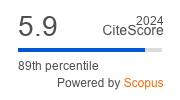Article | Open Access
Post-Publication Gatekeeping Factors and Practices: Data, Platforms, and Regulations in News Work
| Views: | 2721 | | | Downloads: | 2719 |
Abstract: The gatekeeping literature has turned to look at the factors and practices that shape gatekeeping in the post-publication environment, i.e., after news has entered circulation. This article adds to the discussion and argues that news workers share gatekeeping power in the post-publication environment with audiences, platforms, and regulations. Further, this study extends the post-publication gatekeeping framework and considers it in the context of datafication. The article aims to broadly understand how (audience) data is part of editorial decision-making in news media from news workers’ perceptions. The current study was conducted by interviewing news workers from three Finnish news organisations. The interview data was analysed utilising qualitative iterative content analysis. Our analysis revealed that the use of (audience) data in news organisations increasingly shapes news workers’ journalistic decision-making processes. We found that news workers were ambivalent toward data (use) and that their reliance on platform data depended on the particular platform. Furthermore, when interviewed about journalism ethics, news workers only connected it with legislative issues, such as General Data Protection Regulation. Lastly, we could see that regulatory factors of data, i.e., legislation and media self-regulation, have power over news production and distribution. This study reflects how journalism (research) is shifting from an audience-centric view to a data-driven one, i.e., it is experiencing a data turn.
Keywords: audiences; datafication; gatekeeping; news workers; platforms; regulations
Published:
© Margareta Salonen, Veera Ehrlén, Minna Koivula, Karoliina Talvitie-Lamberg. This is an open access article distributed under the terms of the Creative Commons Attribution 4.0 license (http://creativecommons.org/licenses/by/4.0), which permits any use, distribution, and reproduction of the work without further permission provided the original author(s) and source are credited.


